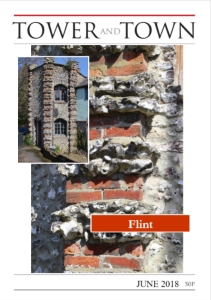

Tower and Town, June 2018 (view the full edition) (view the full edition)Flint Tools And KnappingOne of the pleasures of living in Marlborough is being surrounded by a landscape so obviously worked by humans for thousands of years. Lots of other landscapes have been similarly exploited but the visible signs have long disappeared. The downs are different and we are lucky.
Much of what we see - the tumuli, the West Kennet long barrow, Avebury, the Marlborough mound, the Overton Down field systems, was constructed with flint tools - usually at one remove (flint tools used to make wooden or bone tools for earthmoving). Indeed the oldest items which appear to be knapped flint tools are some 2 million years old. Flint did not have many other uses since medieval times beyond building and fire-lighting. Disappointingly what is commonly known as flint glass - with its high refractive index and its other useful optical qualities - is not made with flint. It was briefly in the late 17th century where the flint nodules were a source of high purity silica used to make a potash lead glass that was the precursor of lead crystal. The name has stayed in use while the process has changed. It was however long used in the English ceramics industry as pebbles in the ball mills used to grind glazes and other raw materials (steel balls would contaminate the ground material with iron). It was also used in the ceramics industry, after being fired to around 1,000?C then ground, as a constituent of the clay. But this use has now been replaced by quartz of a more accessible sort. Alexander Kirk-Wilson |